Kubernetes has long been the heavyweight in container orchestration, but not every team needs, or wants, that much complexity. For many, managing YAML files, mastering cluster configs, and handling endless updates can feel like overkill. Luckily, there are other tools out there that handle containers just as well, often with a gentler learning curve or a more focused approach. In this guide, we’ll take a look at real-world alternatives that make deploying, scaling, and managing containers a little less painful.

1. AppFirst
AppFirst fits naturally into the growing list of Kubernetes alternatives for teams that want less complexity in their infrastructure management. Instead of spinning up clusters, writing YAML, or fine-tuning container orchestration settings, developers simply define what their app needs: CPU, database, networking, Docker image, and AppFirst handles the rest automatically. It provisions secure, compliant infrastructure across AWS, Azure, and GCP, giving teams a seamless way to deploy and scale without maintaining the usual Kubernetes stack.
What makes AppFirst stand out is how it shifts focus back to the application itself. Logging, monitoring, and cost tracking are already built in, so there’s no need to wire up separate observability tools or maintain pipelines. The result is a workflow that feels modern and fast, but without the operational baggage of Kubernetes. For teams that care more about shipping code than managing clusters, AppFirst offers a clean, developer-first path forward.
Wichtigste Highlights:
- Automatic provisioning of infrastructure across AWS, Azure, and GCP
- Built-in monitoring, logging, alerting, and cost visibility
- Works as both SaaS and self-hosted deployment
- Removes the need for Terraform, YAML, or DevOps-heavy setup
- Keeps infrastructure secure, consistent, and compliant by default
Best For:
- Developers who want to focus on applications, not Kubernetes management
- Teams looking for a lightweight alternative to traditional orchestration
- Companies scaling across multiple clouds without deep DevOps expertise
- Organizations that value simplicity, security, and faster delivery
Kontakte:
- Website: www.appfirst.dev

2. Incus
Incus is an open-source tool that lets teams manage containers and virtual machines without the usual complexity that comes with Kubernetes. It’s built for people who want a single platform where they can run both lightweight app containers and full system containers, even VMs, depending on what the project needs. You can control everything through a simple command-line tool or the REST API, whether it’s on your laptop or across a cluster of servers.
What makes Incus stand out is how straightforward it feels. There’s no endless YAML setup or complicated cluster management. You get an image-based system that works with a wide range of Linux distributions, solid security features, and smooth scaling. It’s flexible enough for a personal dev setup but strong enough to handle larger infrastructure, all without locking you into one ecosystem or workflow.
Wichtigste Highlights:
- Runs system containers, app containers, and virtual machines
- Single API for both local and remote management
- Works with different storage and networking setups
- Includes snapshots, backups, and migration tools
- Fully open-source, written in Go
Best For:
- Teams running mixed container and VM workloads
- Developers who want an easier alternative to Kubernetes
- Organizations that need hybrid or multi-environment setups
- Users who prefer direct control instead of heavy abstraction
Kontakte:
- Website: linuxcontainers.org

3. Cloud Foundry
Cloud Foundry is a platform that takes the stress out of deploying and managing applications. Instead of writing pages of Kubernetes configs, developers just push their code using a simple command and get a running app within minutes. It supports all the major languages: Java, Python, Node, and more, so teams can work in whatever stack they’re comfortable with.
The platform handles the heavy lifting behind the scenes, from networking to dependency management. Buildpacks automatically take care of runtime and image creation, so you don’t have to. While it can run on Kubernetes, Cloud Foundry focuses on keeping things developer-friendly and fast, which is why so many teams use it when they just want to focus on building, not configuring.
Wichtigste Highlights:
- Deploy apps fast using the “cf push” workflow
- Automatically builds images with language buildpacks
- Works with multiple languages and frameworks
- Runs on any cloud or infrastructure, including Kubernetes
- Open-source and backed by a large community
Best For:
- Developers who want to skip infrastructure setup
- Teams deploying across different clouds
- Companies looking to simplify Kubernetes integration
- Enterprises building multi-language cloud-native apps
Kontakte:
- Website: www.cloudfoundry.org
- Address: Cloud Foundry 548 Market Street PMB 57274 San Francisco, CA. 94104-5401
- LinkedIn: www.linkedin.com/company/cloud-foundry
- Twitter/X: x.com/cloudfoundry
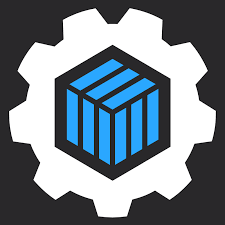
4. Cycle
Cycle is a platform that turns any infrastructure: cloud, on-prem, or bare metal, into a private cloud for containers and VMs. Instead of managing a maze of tools like Kubernetes or Proxmox, Cycle brings everything together in one place. It handles orchestration, updates, networking, and automation on its own, so teams can focus on running workloads instead of maintaining infrastructure.
The idea behind Cycle is pretty simple: keep control of your environment without adding complexity. It updates itself, manages workloads across regions, and gives teams visibility through both a dashboard and an API. Whether you’re running containers, virtual machines, or even serverless functions, Cycle makes it feel consistent everywhere. It’s especially useful for teams that want Kubernetes-like power but without the extra hassle.
Wichtigste Highlights:
- Connects and manages cloud, on-prem, and edge resources
- Automates patches, updates, and deployment tasks
- Runs containers, VMs, and functions together
- Works across regions and providers with no vendor lock-in
- Offers both visual and API management options
Best For:
- Teams that want to move away from Kubernetes complexity
- Companies building private or hybrid clouds
- Organizations that care about data control and flexibility
- DevOps teams managing different types of workloads across environments
Kontakte:
- Website: cycle.io
- LinkedIn: www.linkedin.com/company/cycle-platform

5. Nomad
Nomad from HashiCorp is a simple but capable orchestrator that helps teams deploy and manage both containerized and traditional workloads. It’s built to work across data centers, clouds, and even edge environments without the layers of complexity often tied to Kubernetes. Instead of focusing only on containers, Nomad can run almost anything: binaries, batch jobs, and long-running services, using the same scheduling system.
The platform integrates smoothly with HashiCorp tools like Consul for service discovery and Vault for secret management, making it easier to build a secure and consistent workflow. Teams appreciate that Nomad keeps things lightweight, avoiding the need for multiple control planes or heavy configuration files. It’s the kind of tool you can start small with and scale up naturally as your infrastructure grows, all while staying human-manageable.
Wichtigste Highlights:
- Runs containers, VMs, and non-containerized applications
- Works across cloud and on-prem environments
- Integrates with Consul and Vault for networking and security
- Supports parameterized jobs and reusable templates
- Simple CLI and REST API for easy management
Best For:
- Teams running mixed workloads beyond containers
- Organizations that prefer a simpler alternative to Kubernetes
- Environments that already use HashiCorp tools
- DevOps engineers who value flexible, lightweight orchestration
Kontakte:
- Website: developer.hashicorp.com

6. Portainer
Portainer makes container management feel a lot less intimidating. It provides a clean, visual interface for deploying and monitoring containers across Kubernetes, Docker, and Podman. Instead of relying heavily on command-line operations, teams can use Portainer’s dashboard to handle everything from cluster management to access control. It’s designed to help both IT and operations teams stay on top of complex environments without requiring deep Kubernetes knowledge.
The platform is used in all kinds of setups, from enterprise clusters to industrial IoT systems that run in isolated or air-gapped environments. It centralizes control, reduces manual work, and gives users a clearer view of what’s running where. For many, Portainer is a practical step between full automation and hands-on infrastructure control, offering visibility without the overwhelm.
Wichtigste Highlights:
- Manages Kubernetes, Docker, and Podman through one interface
- Centralized control across remote or air-gapped environments
- Supports policy enforcement and user access management
- Provides monitoring, deployment, and automation tools
- No deep Kubernetes expertise required
Best For:
- Teams that want a visual, simplified way to manage containers
- Enterprises with mixed or distributed infrastructure
- Industrial and IoT operations needing remote management
- Developers looking for an approachable alternative to raw Kubernetes
Kontakte:
- Website: www.portainer.io
- LinkedIn: www.linkedin.com/company/portainer

7. Rancher
Rancher is an open-source platform that simplifies how organizations run and manage multiple Kubernetes clusters. Instead of juggling separate environments, teams can use Rancher to deploy, monitor, and secure clusters across data centers, cloud providers, and edge locations from a single place. It’s designed for large-scale operations where visibility, governance, and security need to work hand in hand.
The platform comes with built-in tools for access control, monitoring, and application management, along with support for various Kubernetes distributions. It helps DevOps teams standardize operations while still leaving room for flexibility across different setups. For many companies, Rancher bridges the gap between Kubernetes’ raw power and real-world usability by putting everything under one consistent management layer.
Wichtigste Highlights:
- Centralized management of multiple Kubernetes clusters
- Works across data centers, public clouds, and edge environments
- Includes built-in security, policy, and monitoring tools
- Supports multiple Kubernetes distributions
- Open-source with enterprise support from SUSE
Best For:
- Organizations managing large or multi-cluster Kubernetes setups
- Teams that need unified governance and visibility
- Enterprises seeking open-source solutions with commercial support
- DevOps teams balancing flexibility with security and compliance
Kontakte:
- Website: www.rancher.com
- LinkedIn: www.linkedin.com/company/rancher
- Facebook: www.facebook.com/rancherlabs
- Twitter/X: x.com/Rancher_Labs
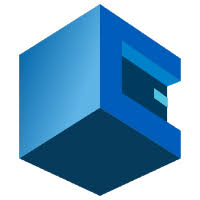
8. AttuneOps
AttuneOps is a practical automation and orchestration platform that helps teams run scripts, manage workflows, and coordinate systems without the usual setup headaches. It connects to both local and remote machines over SSH or WinRM, letting admins run PowerShell, Bash, Python, and other scripts in real time. Instead of restarting failed jobs from scratch, users can fix errors on the fly and resume execution, saving hours of work during complex deployments.
The platform also doubles as a knowledge hub. It documents every automation step, logs activities, and even exports manual instructions for ITIL compliance or offline use. AttuneOps supports everything from simple task scheduling to full-stack server orchestration across Windows, Linux, and macOS environments. By centralizing automation, logging, and documentation, it gives system administrators a clearer, faster way to handle repetitive tasks and build consistent infrastructure operations.
Wichtigste Highlights:
- Agentless automation via SSH and WinRM connections
- Supports Bash, PowerShell, Python, SQL, and other scripting languages
- Centralized job scheduler for Windows and Linux servers
- Built-in documentation and ITIL-compliant reporting
- Supports physical and virtual infrastructure management
Best For:
- System administrators managing multi-server environments
- Teams automating infrastructure tasks without heavy tools
- Organizations needing ITIL-aligned documentation and audit trails
- Companies looking for a practical orchestration alternative to Kubernetes
Kontakte:
- Website: attuneops.io
- LinkedIn: www.linkedin.com/company/AttuneOps
- Twitter/X: x.com/AttuneOps
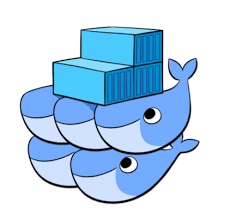
9. Docker Swarm
Docker Swarm is a built-in orchestration feature within the Docker Engine that lets teams run and manage clusters of Docker nodes without needing external tools like Kubernetes. It uses the same Docker CLI, so developers can create, scale, and manage services with familiar commands. Swarm organizes nodes into managers and workers, handles scaling automatically, and ensures the system always matches the declared desired state of the services.
Unlike Kubernetes, which often requires separate setup and configuration layers, Swarm focuses on simplicity. It includes built-in service discovery, load balancing, and security through TLS encryption. Rolling updates, multi-host networking, and automatic task rescheduling make it practical for small and medium setups that need coordination across multiple containers without heavy operational overhead.
Wichtigste Highlights:
- Cluster management integrated directly into Docker Engine
- Declarative service model with automatic state reconciliation
- Built-in service discovery and internal load balancing
- Secure by default with mutual TLS authentication
- Rolling updates and rollback capabilities
Best For:
- Teams already using Docker who want easy clustering
- Developers needing lightweight orchestration without Kubernetes complexity
- Small to mid-sized deployments with straightforward scaling requirements
- Environments favoring simplicity over feature depth
Kontakte:
- Website: docs.docker.com
- Phone: (415) 941-0376
- Address: Docker, Inc. 3790 El Camino Real # 1052 Palo Alto, CA 94306
- LinkedIn: www.linkedin.com/company/docker
- Facebook: www.facebook.com/docker.run
- Instagram: www.instagram.com/dockerinc
- Twitter/X: x.com/docker
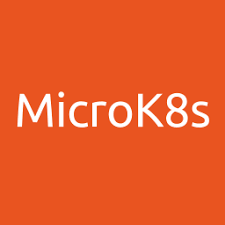
10. MicroK8s
MicroK8s is Canonical’s lightweight Kubernetes distribution designed to make running Kubernetes as easy as possible. It’s a fully functional, upstream-conformant Kubernetes that installs with a single command and works across Linux, Windows, and macOS. MicroK8s brings the same Kubernetes capabilities to everything from laptops to edge devices and production clusters.
It’s often chosen by developers and DevOps teams who need Kubernetes without the administrative overhead. MicroK8s automatically handles updates, security patches, and cluster health through self-healing high availability. It comes bundled with popular add-ons like Istio, Prometheus, and Jaeger, which can be enabled or disabled as needed. This makes it a practical choice for testing, CI/CD, or production use where simplicity and reliability matter more than extensive customization.
Wichtigste Highlights:
- Zero-ops, upstream Kubernetes with easy installation
- Runs on any hardware, including desktops and edge devices
- Self-healing clusters with automatic updates and rollbacks
- Optional add-ons like Istio, Prometheus, and Linkerd
- Supports multi-node clustering and high availability
Best For:
- Developers testing or running Kubernetes locally
- Teams building lightweight clusters for CI/CD or edge workloads
- Organizations wanting Kubernetes features without full-scale operations
- Environments needing a stable, minimal, and easy-to-maintain K8s setup
Kontakte:
- Website: microk8s.io
- Phone: +44 20 8044 2036
- Address: 5th floor 3 More London Riverside London SE1 2AQ United Kingdom
- LinkedIn: www.linkedin.com/company/canonical
- Facebook: www.facebook.com/ubuntulinux
- Instagram: www.instagram.com/ubuntu_os
- Twitter/X: x.com/Canonical
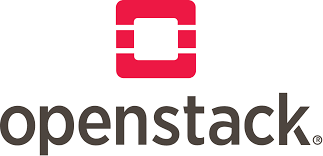
11. OpenStack
OpenStack is an open-source cloud infrastructure platform that manages compute, storage, and networking resources through APIs and dashboards. While it’s often associated with virtual machines, it also supports containers and bare-metal servers, making it a flexible foundation for private and hybrid cloud deployments.
As a Kubernetes alternative, OpenStack takes a broader approach by managing infrastructure at a lower level. It offers orchestration, fault management, and service monitoring across large-scale environments, giving operators deep control over how resources are allocated and automated. It’s widely adopted by telecoms, enterprises, and research institutions that want to run their own scalable cloud environments with open standards and full customization.
Wichtigste Highlights:
- Comprehensive open-source cloud infrastructure management
- Controls compute, networking, and storage across large environments
- Supports containers, VMs, and bare-metal deployments
- Offers orchestration, fault tolerance, and service monitoring
- Backed by the OpenInfra Foundation and an active global community
Best For:
- Enterprises building private or hybrid clouds
- Organizations needing deep infrastructure control
- Telecom and research sectors managing large distributed systems
- Teams prioritizing open standards and self-managed infrastructure
Kontakte:
- Website: www.openstack.org
- Facebook: www.facebook.com/openinfradev
- Twitter/X: x.com/OpenStack
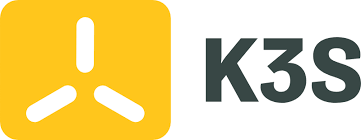
12. K3s
K3s is basically Kubernetes made small and simple. It’s a lightweight, certified distribution built for edge devices and IoT setups, but you can run it almost anywhere – from a Raspberry Pi sitting on your desk to a full server in the cloud. Everything comes as a single, compact binary under 70MB, which means setup is fast and doesn’t demand much from your system. You still get real Kubernetes features like high availability and auto updates, just without all the heavy lifting.
The idea behind K3s is straightforward: bring Kubernetes to places where resources are limited or automation is critical. It’s easy to deploy, runs on ARM and x86 hardware, and is perfect for smaller or remote environments where reliability matters but simplicity wins. For a lot of teams, it’s an easy way to run Kubernetes without the usual headaches.
Wichtigste Highlights:
- Lightweight, CNCF-certified Kubernetes for edge and IoT
- Simple installation as a single binary
- Supports ARM64, ARMv7, and x86_64
- Built-in high availability and easy updates
- Ideal for resource-constrained or remote setups
Best For:
- IoT and edge deployments
- Developers experimenting with small clusters
- Teams running Kubernetes on ARM hardware
- Anyone who needs fast, low-maintenance orchestration
Kontakte:
- Website: k3s.io

13. Amazon Elastic Container Service (ECS)
Amazon ECS takes a different route, it’s not just lighter than Kubernetes, it removes most of the management work altogether. It’s a fully managed container orchestration service that handles the infrastructure, scaling, and security so teams can focus purely on applications. ECS ties directly into AWS services like IAM, CloudWatch, and Fargate, which means you can deploy containers without worrying about managing clusters or nodes.
Because ECS is built into AWS, it’s a great fit for teams that already live in that ecosystem. It automates patching, scaling, and monitoring while keeping security and networking consistent with the rest of your AWS setup. Whether it’s microservices, data processing, or AI workloads, ECS takes away much of the operational noise that comes with Kubernetes.
Wichtigste Highlights:
- Fully managed orchestration built into AWS
- Tight integration with IAM, CloudWatch, and Fargate
- Handles scaling, updates, and infrastructure automatically
- Built-in security and encryption
- Pay-as-you-go pricing for flexibility
Best For:
- Teams already using AWS
- Developers running microservices or batch jobs
- Organizations looking for a no-maintenance orchestration option
- Environments that prioritize security and simplicity
Kontakte:
- Website: aws.amazon.de
- LinkedIn: www.linkedin.com/company/amazon-web-services
- Facebook: www.facebook.com/amazonwebservices
- Instagram: www.instagram.com/amazonwebservices
- Twitter/X: x.com/awscloud

14. VMware Tanzu Kubernetes Grid Integrated
VMware Tanzu Kubernetes Grid Integrated, or TKGI, focuses on making Kubernetes work smoothly in big, multi-cloud environments. It helps enterprises deploy and manage clusters across data centers and public clouds while automating things like scaling, patching, and security updates. It’s built on open-source Kubernetes, so it stays compatible with all the tools and services the ecosystem already offers.
What makes TKGI stand out is how it handles complexity at scale. It ties into VMware’s infrastructure stack, giving teams a unified view of their clusters across locations. Built-in networking, logging, and monitoring make it easier to keep everything running without constant maintenance. For organizations already running on VMware, it feels like a natural extension rather than an overhaul.
Wichtigste Highlights:
- Enterprise-ready Kubernetes for multi-cloud and hybrid setups
- Automates deployment, scaling, and security updates
- Integrated logging, networking, and monitoring
- Unified management through VMware’s platform
- Backed by 24/7 VMware support
Best For:
- Enterprises running on VMware infrastructure
- Teams managing Kubernetes across multiple clouds
- Regulated industries with strict compliance needs
- Organizations looking to simplify large-scale K8s operations
Kontakte:
- Website: www.vmware.com
- LinkedIn: www.linkedin.com/company/vmware
- Facebook: www.facebook.com/vmware
- Twitter/X: x.com/vmware

15. Red Hat OpenShift
Red Hat OpenShift is Red Hat’s take on enterprise-grade Kubernetes, built for teams that want the flexibility of open-source Kubernetes but with more structure, automation, and support. It brings together container orchestration, developer tools, and security features into one platform. Teams can use it to build, deploy, and manage applications consistently across on-premises, private, and public clouds.
While Kubernetes focuses on cluster management, OpenShift adds layers that make day-to-day operations easier. It includes built-in CI/CD pipelines, developer self-service, and automated lifecycle management for both apps and infrastructure. It’s also tightly integrated with Red Hat Enterprise Linux, which gives it a strong foundation for security and compliance. Essentially, it’s Kubernetes with a bit more polish and guardrails for enterprise use.
Wichtigste Highlights:
- Full-stack Kubernetes platform for app deployment and management
- Runs across hybrid and multi-cloud environments
- Built-in CI/CD tools and developer self-service features
- Integrated security, policy management, and compliance
- Backed by Red Hat’s enterprise support and documentation
Best For:
- Enterprises standardizing on Red Hat infrastructure
- Teams that want Kubernetes with built-in operational automation
- Organizations working across hybrid or multi-cloud setups
- Developers looking for an all-in-one container management solution
Kontakte:
- Website: www.redhat.com
- Telefon: +1 919 754 3700
- Address: 100 East Davie Street Raleigh, NC 27601 United States
- LinkedIn: www.linkedin.com/company/red-hat
- Facebook: www.facebook.com/RedHat
- Twitter/X: x.com/RedHat

16. Heroku
Heroku is one of the easiest ways to deploy and manage applications without dealing with infrastructure at all. It’s a platform-as-a-service (PaaS) that handles containerization, scaling, and updates automatically, letting developers push code and move on. Built around a smooth developer experience, it supports popular languages like Python, Node.js, Ruby, Java, and Go, and integrates with hundreds of add-ons for databases, caching, and more.
Lately, Heroku has leaned into AI, offering tools for building and deploying AI applications with managed inference and agent support. It’s still the go-to option for teams that value simplicity, fast setup, and minimal maintenance. You don’t need to know Kubernetes or Docker to use it—it’s all abstracted away. For developers, it’s about getting things online quickly and reliably, with as little friction as possible.
Wichtigste Highlights:
- Fully managed platform for app deployment and scaling
- Supports multiple programming languages and frameworks
- Includes PostgreSQL, Redis, and Kafka as managed services
- Built-in continuous delivery and GitHub integration
- New AI features for inference and agent-based apps
Best For:
- Developers who want to skip infrastructure management entirely
- Startups and small teams launching apps quickly
- Enterprises needing reliable, scalable app hosting without K8s complexity
- Teams experimenting with AI or data-driven applications
Kontakte:
- Website: www.heroku.com
- Address: 415 Mission Street Suite 300 San Francisco, CA 94105
- LinkedIn: www.linkedin.com/company/heroku
- Twitter/X: x.com/heroku
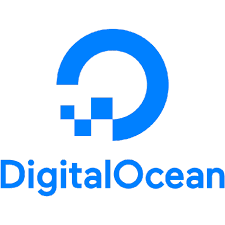
17. DigitalOcean Kubernetes (DOKS)
DigitalOcean Kubernetes, or DOKS, is a managed Kubernetes service aimed at teams that want something easier to handle than the big cloud providers. It offers a fully managed control plane with built-in high availability, free bandwidth, and simple pricing that doesn’t hide extra costs behind complex billing models. The setup is straightforward – you can spin up clusters, add GPU nodes, and manage workloads through the DigitalOcean dashboard, API, or CLI without dealing with control plane maintenance.
DOKS is built to make Kubernetes more approachable without stripping away functionality. It supports autoscaling, surge upgrades, GPU-powered nodes for AI and machine learning workloads, and automatic updates. For smaller teams, startups, or developers who just want Kubernetes that “works” without an ops-heavy setup, it’s a practical balance of power and simplicity.
Wichtigste Highlights:
- Fully managed, CNCF-certified Kubernetes service
- Free high-availability control plane with 99.95% uptime SLA
- Automatic scaling, updates, and cluster maintenance
- GPU and AI workload support with NVIDIA H100 nodes
- Simple, transparent pricing with bandwidth included
Best For:
- Startups and small teams needing affordable Kubernetes
- Developers building AI or data-intensive workloads
- Businesses looking to avoid complex cloud billing
- Teams that want a managed Kubernetes experience with minimal overhead
Kontakte:
- Website: www.digitalocean.com
- LinkedIn: www.linkedin.com/company/digitalocean
- Facebook: www.facebook.com/DigitalOceanCloudHosting
- Instagram: www.instagram.com/thedigitalocean
- Twitter/X: x.com/digitalocean
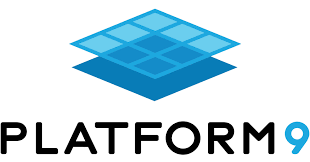
18. Platform9
Platform9 offers a managed private cloud solution that brings the flexibility of public cloud operations to on-premises environments. It’s designed as a VMware alternative, giving organizations familiar virtualization features like high availability, live migration, and resource balancing, but without the steep licensing costs or long migration timelines. The platform works with existing storage and server infrastructure, so teams can reuse what they already have while gaining self-service provisioning, API automation, and integrated Kubernetes support.
What stands out about Platform9 is how it combines virtualization and Kubernetes management under one roof. You can migrate from VMware environments in weeks, automate cluster operations, and run virtual machines and containers side by side. It’s meant for enterprises that want private cloud control with cloud-native capabilities built in.
Wichtigste Highlights:
- Enterprise-grade private cloud and VM management platform
- Automated migration from VMware environments
- Managed Kubernetes service included
- Works with existing hardware and storage systems
- Built-in services like databases, firewalls, and VPNs
Best For:
- Enterprises migrating off VMware
- Organizations modernizing data centers with Kubernetes
- Teams wanting to unify VM and container workloads
- Businesses seeking cost-efficient private cloud control
Kontakte:
- Website: platform9.com
- Phone: 650-898-7369
- Email: info@platform9.com
- Address: 84 W Santa Clara St Suite 800 San Jose, CA 95113
- LinkedIn: www.linkedin.com/company/platform9-systems
- Facebook: www.facebook.com/platform9sys
- Instagram: www.instagram.com/platform9sys
- Twitter/X: x.com/Platform9Sys

19. Qovery
Qovery is an automation platform that simplifies how teams deploy and manage cloud infrastructure. It’s built around the idea of “invisible DevOps,” meaning developers can focus on building features while Qovery handles provisioning, scaling, security, and optimization automatically. The platform uses AI-driven agents to guide decisions in areas like cost management, security compliance, and observability, essentially turning complex DevOps work into a more intuitive experience.
Qovery supports multiple cloud providers and integrates easily with tools like GitHub, giving teams one-click infrastructure provisioning, automated deployments, and real-time monitoring. It’s especially appealing for startups and fast-moving engineering teams that want the benefits of Kubernetes and DevOps automation without building a dedicated operations team.
Wichtigste Highlights:
- AI-assisted DevOps automation platform
- Automated provisioning, scaling, and deployments
- Cost optimization with spot instances and usage analysis
- Built-in observability and security compliance tools
- Seamless integration with existing CI/CD workflows
Best For:
- Startups and SaaS teams scaling rapidly
- Companies without dedicated DevOps staff
- Developers who want self-service infrastructure automation
- Teams managing multi-cloud or hybrid environments
Kontakte:
- Website: www.qovery.com
- LinkedIn: www.linkedin.com/company/qovery
- Twitter/X: x.com/qovery_
Abschließende Überlegungen
Kubernetes changed how teams think about container orchestration, but it isn’t the only way to get the job done. The tools emerging around it, show that there’s more than one path to reliable, scalable infrastructure. Some emphasize simplicity and speed, others focus on flexibility or private-cloud control, but they all share a common goal: to make deployment and management easier without sacrificing performance.
Choosing the right alternative comes down to what your team values most. If you need complete control, a lightweight scheduler, or a hands-off automation platform, there’s an option built for that. The best orchestration tool isn’t necessarily the most complex one, it’s the one that lets your developers build, ship, and iterate with the least friction.


